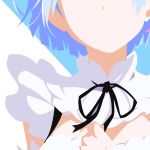Advertisement
Not a member of Pastebin yet?
Sign Up,
it unlocks many cool features!
- #include <opencv2/opencv.hpp>
- #include <iostream>
- using namespace cv;
- using namespace std;
- // Warps and alpha blends triangular regions from img1 and img2 to img
- void warpTriangle(Mat &img1, Mat &img2, vector<Point2f> tri1, vector<Point2f> tri2)
- {
- // Find bounding rectangle for each triangle
- Rect r1 = boundingRect(tri1);
- Rect r2 = boundingRect(tri2);
- // Offset points by left top corner of the respective rectangles
- vector<Point2f> tri1Cropped, tri2Cropped;
- vector<Point> tri2CroppedInt;
- for (int i = 0; i < 3; i++)
- {
- tri1Cropped.push_back(Point2f(tri1[i].x - r1.x, tri1[i].y - r1.y));
- tri2Cropped.push_back(Point2f(tri2[i].x - r2.x, tri2[i].y - r2.y));
- // fillConvexPoly needs a vector of Point and not Point2f
- tri2CroppedInt.push_back(Point((int)(tri2[i].x - r2.x), (int)(tri2[i].y - r2.y)));
- }
- // Apply warpImage to small rectangular patches
- Mat img1Cropped;
- img1(r1).copyTo(img1Cropped);
- // Given a pair of triangles, find the affine transform.
- Mat warpMat = getAffineTransform(tri1Cropped, tri2Cropped);
- // Apply the Affine Transform just found to the src image
- Mat img2Cropped = Mat::zeros(r2.height, r2.width, img1Cropped.type());
- //warpMat = cv::Mat::eye(warpMat.rows, warpMat.cols, warpMat.type());
- warpAffine(img1Cropped, img2Cropped, warpMat, img2Cropped.size(), cv::INTER_LINEAR, cv::BORDER_REFLECT_101);
- // Get mask by filling triangle
- Mat mask = Mat::zeros(r2.height, r2.width, CV_32FC3);
- fillConvexPoly(mask, tri2CroppedInt, Scalar(1.0, 1.0, 1.0), 16, 0);
- // Copy triangular region of the rectangular patch to the output image
- multiply(img2Cropped, mask, img2Cropped);
- multiply(img2(r2), Scalar(1.0, 1.0, 1.0) - mask, img2(r2));
- img2(r2) = img2(r2) + img2Cropped;
- }
- int main(int argc, char** argv)
- {
- // Read input image and convert to float
- Mat imgIn = imread("robot.jpg");
- imgIn.convertTo(imgIn, CV_32FC3, 1 / 255.0);
- // Output image is set to white
- Mat imgOut = Mat::ones(imgIn.size(), imgIn.type());
- imgOut = Scalar(1.0, 1.0, 1.0);
- // Input triangle
- vector <Point2f> triIn;
- triIn.push_back(Point2f(360, 200));
- triIn.push_back(Point2d(60, 250));
- triIn.push_back(Point2f(450, 400));
- // Output triangle
- vector <Point2f> triOut;
- triOut.push_back(Point2f(400, 200));
- triOut.push_back(Point2f(160, 270));
- triOut.push_back(Point2f(400, 400));
- // Warp all pixels inside input triangle to output triangle
- warpTriangle(imgIn, imgOut, triIn, triOut);
- // Draw triangle on the input and output image.
- // Convert back to uint because OpenCV antialiasing
- // does not work on image of type CV_32FC3
- imgIn.convertTo(imgIn, CV_8UC3, 255.0);
- imgOut.convertTo(imgOut, CV_8UC3, 255.0);
- // Draw triangle using this color
- Scalar color = Scalar(255, 150, 0);
- // cv::polylines needs vector of type Point and not Point2f
- vector <Point> triInInt, triOutInt;
- for (int i = 0; i < 3; i++)
- {
- triInInt.push_back(Point(triIn[i].x, triIn[i].y));
- triOutInt.push_back(Point(triOut[i].x, triOut[i].y));
- }
- // Draw triangles in input and output images
- polylines(imgIn, triInInt, true, color, 2, 16);
- polylines(imgOut, triOutInt, true, color, 2, 16);
- imshow("Input", imgIn);
- imshow("Output", imgOut);
- waitKey(0);
- return 0;
- }
Advertisement
Add Comment
Please, Sign In to add comment
Advertisement

